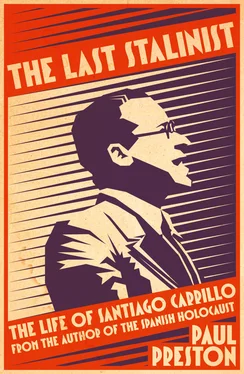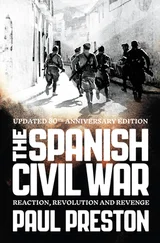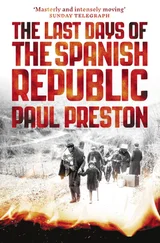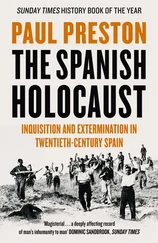In response to the insulting attacks of the FJS pamphlet, the Besteiristas were emerging from their silence. 23They founded a publication to defend their ideas. Called Democracia , it appeared weekly from 15 June to 13 December. Its lawful appearance was taken by Carrillo’s crony Segundo Serrano Poncela as proof of the Besteirista treachery to the Socialist cause. 24This point of view was given some credibility by Besteiro’s inaugural lecture, ‘Marxism and Anti-Marxism’, on being elected to the Academy of Political and Moral Sciences. In this long and tortuous lecture, given on 28 April 1935, Besteiro set out to prove that Marx had been hostile to the notion of the dictatorship of the proletariat. He infuriated the imprisoned bolshevizers with his insinuations that the violence of the Socialist left was hardly distinguishable from fascism. 25A devastating reply to Besteiro’s lecture by Largo’s most competent adviser, Luis Araquistáin, appeared in the doctrinal journal Leviatán , which had survived the repression of the Socialist media. Araquistáin’s articles were of a notably higher level of theoretical competence than Octubre: segunda etapa and their demolition of the inaugural lecture ensured Besteiro’s withdrawal from the PSOE leadership stakes. 26
With Besteiro eliminated, in late May Prieto returned to the fray with a series of highly influential articles. Collectively entitled Posiciones socialistas , they were published shortly afterwards as a book. The first two restated the need to avoid the great tactical error of 1933, arguing that the right would be united at the next elections and an exclusively workers’ coalition would be the victim of anarchist indiscipline. For Prieto, only a Republican–Socialist coalition could guarantee an amnesty for political prisoners. The last three articles set out, in mild yet firm language, to expose some of the more absurd contradictions of Octubre: segunda etapa . Prieto indignantly dismissed the right of untried youngsters to call for the expulsion of militants who had dedicated their lives to the PSOE and pointed out that the accusations made against various sections of the Socialist movement by the pamphlet were most applicable to the FJS itself. Above all, he denounced the bolshevizers’ dictatorial tendencies and proposed a party congress to settle the direction that the movement was to take. 27
With Carrillo’s name on the cover, Octubre was reissued with a reply to Prieto. Largo Caballero’s friend Enrique de Francisco wrote to Prieto to say that he had no right to make party policy in bourgeois newspapers. Prieto replied that the same moralistic view had not inhibited the Socialist Youth from advocating bolshevization. More stridently, the journalist Carlos de Baraibar, in consultation with Largo Caballero, prepared a book attacking the ‘false socialist positions’ of Prieto. In criticizing him for breaking party discipline by publicizing his ideas, Baraibar conveniently forgot that the FJS had not hesitated to broadcast its controversial views. 28The extremism of the FJS was seriously dividing Spanish socialism. While the repressive policies of the CEDA–Radical government and the existence of thousands of political prisoners made revolutionary propaganda attractive, they also ensured a sympathetic mass response to Prieto’s call for unity and a return to the progressive Republic of 1931–3. An indication of the bitterness being engendered was shown in the summer of 1935 when the Caballeristas produced a legal weekly newspaper called Claridad . Its pages loudly backed the FJS call for the expulsion of the Besteiristas and the marginalization of the Prietistas. 29 Democracia responded by arguing that the bolshevization campaign was just a smokescreen to divert attention from the FJS’s failures in October 1934. When Saborit made the gracious gesture of visiting the prisoners in the Cárcel Modelo, Largo Caballero rudely refused to shake his hand or even speak to him. 30
Everything changed after the Seventh Congress of the Comintern was held in Moscow in August 1935. The secretary general, Giorgi Dimitrov, launched a call for proletarian unity and a broad popular front of all anti-fascist forces. Already, in a speech on 2 June, the PCE secretary general, José Díaz, had openly called for union with the PSOE. On 3 November, he declared that the Seventh Congress showed the need for a Popular Front. 31Carrillo was delighted. In prison, he and Hernández Zancajo lived in close proximity to their comrades from the UJC, Trifón Medrano and Jesús Rozado. They were aware that in October 1934 there had been some collaboration on the ground between the rank-and-file militants of their respective organizations. Now their daily encounters and discussions favoured the eventual unification of their organizations. 32
The FJS delegate at the Comintern congress, José Laín Entralgo, reported back enthusiastically that the Communist union, the Confederación General de Trabajo Unitaria (CGTU), would amalgamate with the UGT. He also claimed that the switch of tactics meant that Moscow had returned sovereignty to the various national parties and that there was therefore no longer any reason why the FJS should not join the Comintern. 33Carrillo was already trying to secure the incorporation of the Trotskyist Bloc Obrer i Camperol and the Communist Youth into the PSOE as part of the process of bolshevizing the party. Writing in Leviatán , Araquistáin rightly suggested that Moscow’s fundamental objective with the Popular Front tactic was to ensure that liberal and left-wing anti-fascist governments would be in power in the West to ensure favourable alliances should Germany declare war on the USSR. Far from breaking with the old Comintern habit of dictating the same policy for each country, as the FJS fondly thought, the new tactic confirmed the dictatorial customs of the Third International. Araquistáin accepted the need for proletarian unity but rejected the notion of alliance with the bourgeois left. 34
Largo Caballero was keen on working-class unity as long as it meant the absorption of the Communist working-class rank and file into the UGT. However, he remained hostile to an electoral coalition with the Left Republicans and, like Araquistáin, he opposed the idea of the PSOE joining the Comintern. 35For this reason, Carrillo had to be circumspect in all the negotiations with the imprisoned UJC members and crucially with the most senior Comintern representative in Spain, the Argentinian Vittorio Codovila, codenamed ‘Medina’. The director of the Cárcel Modelo turned a blind eye as Codovila was smuggled into the prison as part of a family party visiting Carrillo. Codovila was surprised by Carrillo’s readiness to accept all of the conditions requested by the Communists. All he wanted in return was for the name of the new organization to be the Juventudes Socialistas Unificadas. His reasoning was that if the FJS lost the word ‘Socialista’ from its title, it would lose its seat on the PSOE executive and be less able to continue the struggle to purge Prieto and bolshevize the party. 36
On the first anniversary of the October insurrection, the FJS had issued a circular signed by Santiago Carrillo authorizing its local sections to draft joint manifestos with the UJC but not to organize joint commemorations since the PSOE had decreed that the FJS could hold joint events only with other Socialist organizations. The circular noted regretfully that the PSOE had in fact made no arrangements to celebrate the anniversary. However, it recommended that local FJS sections organize their own publicity for the anniversary and to do so stressing that ‘October had been a proletarian movement to conquer power’, that the Socialist Party had been its only leader (something that the PSOE leadership never acknowledged) and that October had halted ‘the rise of fascism’. 37
Читать дальше












